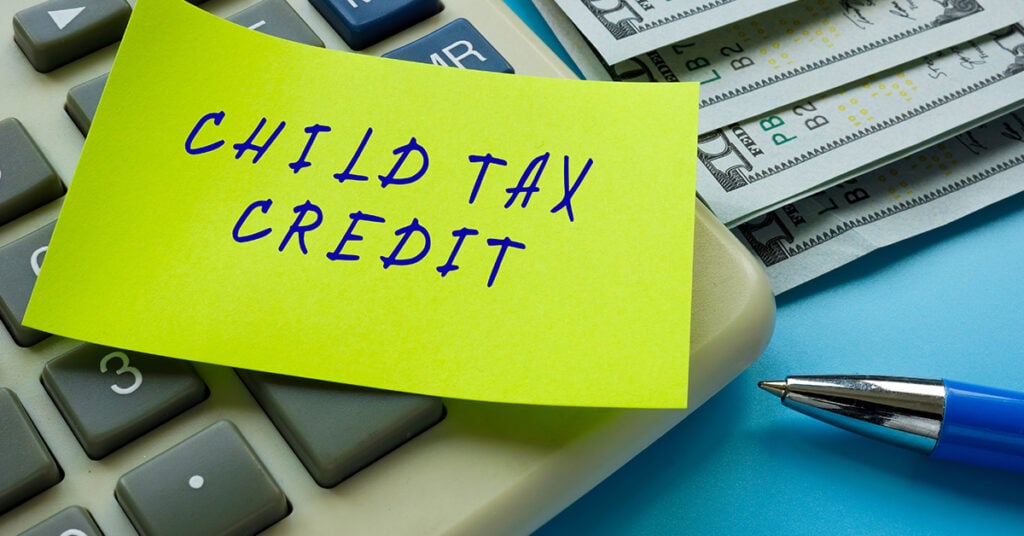Congress may enact bipartisan legislation after the midterm election to stop corporate tax increases that are scheduled to go into effect under former President Trump’s 2017 tax law, which Republicans passed without a single Democratic vote. Republican lawmakers who voted for the 2017 tax law now universally want to prevent these cost-containing provisions in that law from taking effect, which would make Trump’s corporate tax cuts even larger than originally enacted. Regardless of what one thinks of the merits of this, it would be entirely unreasonable to enact these corporate tax cut “extenders” without also extending the expansions in the Child Tax Credit that pulled 2.1 million children out of poverty in 2021 according to recent Census data.
Year-End Tax Deal Could Significantly Boost Trump’s Corporate Tax Cuts
At the time it was enacted, the 2017 tax law was projected to cost $1.5 trillion over a decade. (The projected cost has fluctuated over time, but the Congressional Budget Office’s most recent projection is $1.6 trillion over the first decade it is in effect.)
This price tag was decried by Congressional Democrats when the law was being debated. But even then, it was clear that the overall revenue loss could be much more. One reason is that the estimated 10-year cost of the bill was kept down by several cost-containing provisions that were scheduled to take effect a few years after enactment. Anyone who had observed Congress in action could predict that proponents of the law never really wanted these provisions, which would reduce the size of the corporate tax cuts , to take effect.
Now as those provisions start to scale back some of the corporate tax cuts, the very lawmakers who drafted them are pushing to reverse them. This includes even Kevin Brady, who drafted the 2017 law as chairman of the House Ways and Means Committee. If done on a permanent basis, reversing these cost-containing provisions would bring the price tag of Trump’s 2017 tax law closer to $2 trillion for its first decade, according to the CBO). (The cost is likely to be greater because CBO does not yet have a revenue score for one of the provisions.)
Lawmakers can hide much of this cost by enacting legislation known as corporate tax cut “extenders” that would delay the cost-containing provisions from going into effect for just a year or two, so that the official revenue estimate will be less dramatic. But after Congress does this once it will become routine for Congress to do it every year, so the ultimate cost is likely to be what is shown in this table.
Many Democratic lawmakers seem to support these corporate tax break extenders without acknowledging they are expanding the corporate tax cuts they opposed in 2017. Corporate lobbyists have attempted to distract lawmakers from this fact. For example, the National Association of Manufacturers (NAM) recently sent a letter to members of Congress praising the 2017 law (the Tax Cuts and Jobs Act) and suggesting that they “build on this progress” by making three legislative changes that would actually reverse the cost-containing provisions of that very law.
The three most significant cost-containing provisions in the 2017 law, which are the ones that NAM calls on Congress to reverse, are the winddown of “bonus” depreciation, less generous rules for writing off research expenditures and stricter limits on deductions for interest expenses.
A wind-down of “bonus” depreciation for investments
If the tax rules followed economic logic, companies would deduct the costs of investments in equipment from their taxable income over time (in other words, they would depreciate those investments) as the equipment wears out and loses value. Accelerated depreciation allows companies to deduct those costs more quickly. The most likely outcome is that this rewards companies for making investments they would have made absent any tax break. Such depreciation breaks are a major reason why some corporations pay little in U.S. taxes. The 2017 law provided the most accelerated depreciation possible, allowing 100 percent “bonus” depreciation, meaning companies could deduct the full cost of equipment in the year it was purchased.
From 2018 through 2022, the portion of equipment investment costs that could be deducted in the first year was set at 100 percent and then is scheduled to gradually decline each year after until reverting to the permanent rules in 2027. (Even the permanent rules usually allow companies to write off the costs of equipment faster than it wears out.)
Less generous tax rules for research expenditures
If the tax rules followed economic logic, the cost of investments in research would be deducted from taxable income over time (amortized) as the fruits of that research lose value. Until now, the tax rules treated research much more generously, allowing businesses to deduct the entire amount of those expenses in the year that they are incurred. Under the 2017 law, starting this year, companies are required to deduct those costs over 5 years. (Tax rules also provide a credit for research that is a separate provision and is not affected by the 2017 law.)
Stricter limits on deductions claimed for interest expense
When a company borrows to finance an investment, it usually deducts the interest expense from its taxable income the way it deducts other business expenses. But interest deductions can become a tool for tax avoidance, especially when combined with accelerated depreciation. The 2017 law deals with this by generally limiting interest deductions to 30 percent of adjusted taxable income.
Before 2022, the law defines adjusted taxable income as taxable income before interest, taxes, depreciation and amortization are subtracted. From 2022 on, the law defines adjusted taxable income as a smaller number, which is taxable income before interest and taxes are subtracted (after depreciation and amortization are subtracted). The bottom line is that some companies are allowed to deduct less interest this year than they could previously.
Other Tax Cut Extenders Likely to Be Much Smaller
Year-end legislation could include other tax cut extenders that would have a less significant impact on revenue. Several tax breaks unrelated to the 2017 law expired in 2022 and CBO projects that the cost of extending them would be around $2 billion-$6 billion a year for the next decade.
Many of these expired tax provisions are designed to encourage cleaner energy or other investments that few would find fault with. For some of these provisions, the justification is murkier to put it mildly – like a depreciation break for racehorses that would cost $360 million over a decade. In any event, the overall cost of these extenders is almost insignificant compared to the much larger costs of the provisions that would expand Trump corporate tax cuts, as shown in the earlier table.
Will Congress Extend Corporate Tax Breaks but Not Tax Provisions that Reduce Child Poverty?
There is one temporary tax provision that has done more good than any of these, and it is designed to help children, not corporations and their shareholders. The American Rescue Plan Act (ARPA) expanded the Child Tax Credit (CTC) dramatically for one year in 2021. This temporary expansion pulled 2.1 million children out of poverty that year and helped millions more, according to new Census data.
The Build Back Better Act, which the House passed in November, included language that would have extended the ARPA expansion of the CTC. But the version of that legislation that ultimately became law, the Inflation Reduction Act, did not include the CTC provisions.
A recent ITEP report estimates how families and children would be affected nationally and in each state if Congress extended the ARPA expansion of the CTC. It finds that this would benefit more than 55 million children and would benefit nearly all poor children.
If lawmakers believe it’s worthwhile to extend corporate tax breaks, then it would be entirely unreasonable for them to not conclude the same about tax provisions that help low-income children.





